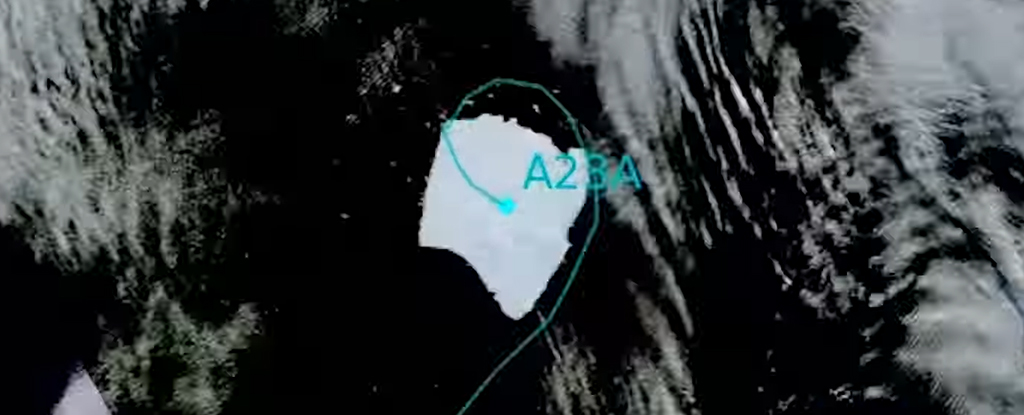With a surface area more than twice that of Greater London’s, A23a is the biggest iceberg on the planet, having calved from the Filchner-Ronne Ice Shelf in 1986.
The frozen leviathan is now on the move across Antarctica seas once more having spent the last few months going round in circles.
Its first few decades of freedom were anticlimactic, sitting anchored on the sea floor until finally in 2020 it began inching towards the Southern Ocean, only to become trapped by a swirling vortex of water earlier this year.
These particular ocean vortexes are known as Taylor columns, caused by the presence of underwater mountains. The circulating currents that result can make it difficult for icebergs to break free, but A23a has done just that.
Having escaped the Taylor column, the trillion-ton A23a can progress to the next stage of a journey, which scientists are continuing to closely monitor.
frameborder=”0″ allow=”accelerometer; autoplay; clipboard-write; encrypted-media; gyroscope; picture-in-picture; web-share” referrerpolicy=”strict-origin-when-cross-origin” allowfullscreen>
“It’s exciting to see A23a on the move again after periods of being stuck,” says oceanographer Andrew Meijers from the British Antarctic Survey (BAS).
Those periods include more than three decades of being grounded in the Weddell Sea, trapped by its own size and weight on the ocean floor. The interrupted progress of A23a has significantly slowed its melting.
Late last year the mega-iceberg got on the move again, tracked by the ESA Copernicus Sentinel-1 satellite. Around the same time, scientists were able to take a closer look at A23a, taking samples of the surrounding waters.
We know that icebergs can make a huge difference to the levels of carbon and nutrients in the water as they melt, which in turn affects food chains and aquatic life under the waves.
“We are interested to see if it will take the same route the other large icebergs that have calved off Antarctica have taken,” says Meijers. “And more importantly what impact this will have on the local ecosystem.”
The team predicts winds and currents will carry A23a into the Southern Ocean as it follows the Antarctic Circumpolar Current. That will take it closer to an area known as ‘iceberg alley‘, which tends to be where larger icebergs end up.
As it heads towards the island of South Georgia, A23a is anticipated to hit warmer waters and melt more quickly. That means everything it’s picked up from the rocky ocean floor and all the dust gathered on its surface will be released into the water.
Considering the scale of A23a, it’s difficult to predict what the consequences of its melting are going to be – but past research has shown a boost in iron from melting glaciers can increase phytoplankton levels, for example, trapping a portion of CO2 from the atmosphere.
All of this needs to be weighed against the potentially catastrophic downsides of major melting at the poles – downsides that include rising sea levels and habitat loss for the animals that live on and around these glaciers. A new study has also just linked lowering Antarctic sea ice with increasing ocean storms.
“We know that these giant icebergs can provide nutrients to the waters they pass through, creating thriving ecosystems in otherwise less productive areas,” says BAS biogeochemist Laura Taylor.
“What we don’t know is what difference particular icebergs, their scale, and their origins can make to that process.”





